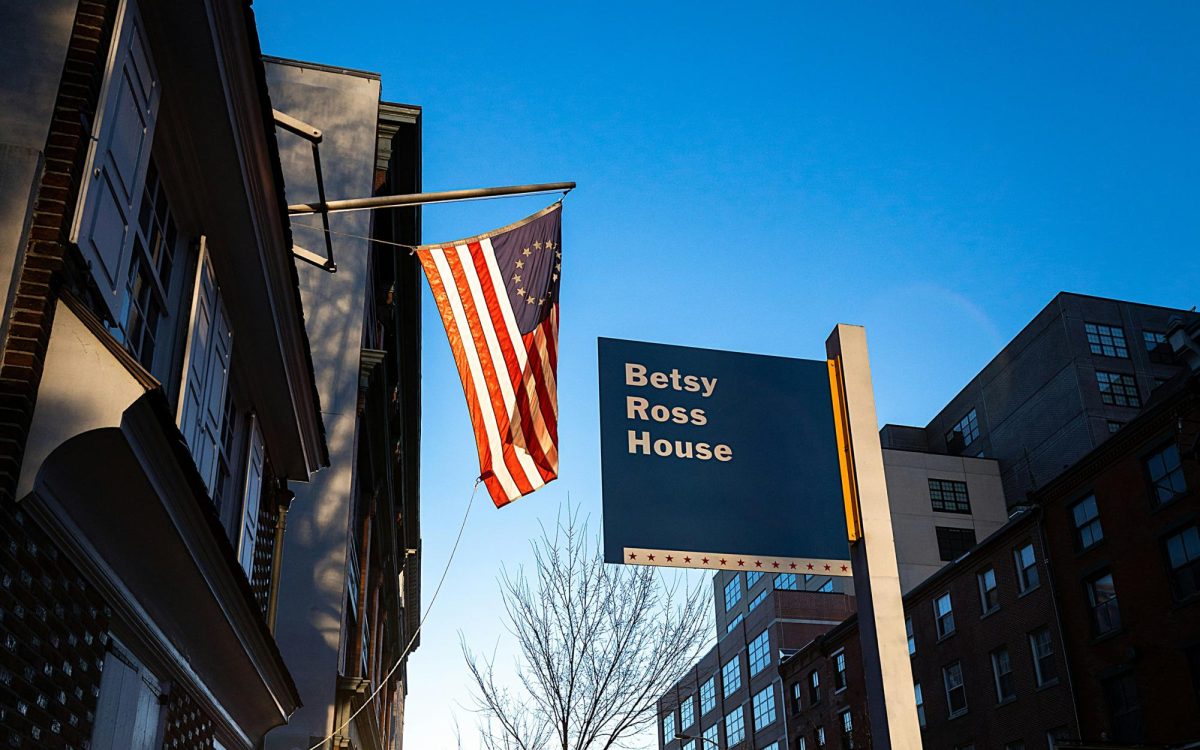In case you missed this particular class in third grade, let me tell you about a true American patriot: Elizabeth Griscom “Betsy” Ross, who was born Jan. 1, 1752.
She was an American seamstress/upholsterer whose work is still admired throughout the world. She’s credited with making the first American flag known today as the “Betsy Ross flag.”
According to Ross family history, a 1776 visit by Gen. George Washington and two congressional members visited Mrs. John Ross, showing her a sketch of what Washington designed. The sketch had 13 stars in a field of blue, situated in a circle above 13 red and white strips.
Mrs. Ross had been making flags for the Pennsylvania navy during the American Revolution, so for her it was not a difficult task.
In 1775, the Pennsylvania naval committee, headed by Benjamin Franklin and George Ross (uncle of John Ross), ordered the construction of gunboats that would eventually need flags.
 The American Revolutionary War broke out when Betsy and John had been married for only two years. John Ross was assigned to guard munitions and, according to one legend, was killed by a gun-powder explosion, but family members have doubts about that story.
The American Revolutionary War broke out when Betsy and John had been married for only two years. John Ross was assigned to guard munitions and, according to one legend, was killed by a gun-powder explosion, but family members have doubts about that story.
As a 24-year-old widow, Betsy continued working in the upholstery business repairing uniforms and making tents and blankets, and stuffed paper tube cartridges with musket balls for prepared packaged ammunition in 1779 for the Continental Army — and, yes, flags. Her work for the revolution was every bit as important as any soldier on the field of battle.
There is speculation that Betsy was the “beautiful young widow” who distracted Hessian general Carl von Donop in Mount Holly, New Jersey, after the Battle of Iron Works Hill. This kept von Donop’s forces out of the crucial “turning-of-the-tide” Battle of Trenton on the morning of Dec. 26, 1776, when the Hessian and British troops were defeated after Washington’s crossing of the Delaware River.
On June 15, 1777, Betsy married her second husband, mariner Joseph Ashburn. In 1780, Ashburn’s ship was captured by a Royal Navy frigate and he was charged with treason (for being of British ancestry — naturalization to American colonial citizenship was not recognized). He was imprisoned at Old Mill Prison in England. Ashburn died while in prison. Three years later, in May 1783, she married John Claypoole, who had earlier met Joseph Ashburn in the English Old Mill Prison. Claypoole had informed Betsy of her husband’s death. The Claypoole couple would have five daughters.
In 1793, Betsy’s mother, father and sister all died in a severe yellow fever epidemic. In 1817, after two decades of poor health, John Claypoole died.
Betsy continued her upholstery business for 10 more years. Upon retirement, she moved in with her second Claypoole daughter, Susanna, in Abington Township of Montgomery County, Pennsylvania. Her eldest Claypoole daughter, Clarissa, had taken over Ross’ business back in Philadelphia.
Betsy, by then completely blind, spent her last three years living with her middle Claypoole daughter, Jane, in rapidly growing and industrializing Philadelphia.
Betsy Ross Claypoole died on Jan. 30, 1836, at the age of 84, some 60 years after the Declaration of Independence. She was survived by five daughters with John Claypoole and one sister, Hannah Griscom Levering, who herself died about 11 months later.
Although it is one of the most visited tourist sites in the city of Philadelphia, the claim she once lived at the so-called “Betsy Ross House” is still a matter of historical dispute. Betsy Ross’ body was first interred at the Free Quaker burial grounds on North Fifth Street in Philadelphia. However, in 1975, in preparation for the American Bicentennial, Philadelphia city leaders ordered her remains moved to the courtyard of the Betsy Ross House. But cemetery workers found no remains beneath her tombstone. Bones found elsewhere in the family plot were deemed to be hers and moved to the current grave now visited by tourists at the Betsy Ross House.
Today’s naysayers, as well as those who are just plain ignorant of our nation’s history, should take the time to read about Betsy Ross, one of our earliest patriots and arguably the nation’s first feminist. Any thought of the Betsy Ross Flag being offensive to anyone who calls themselves an American is true folly.
Betsy’s 13-star flag is a symbol every patriotic American should be proud of and continues to be recognized as an official national symbol. Anyone “offended,” by the banner George Washington designed, no doubt, has been listening to history revisionists who will find fault with anything patriotic. They all should put their big-boy pants on and stand tall with hand over heart.
Tom Morrow is a longtime Oceanside-based journalist and author.
Columns represent the views of the individual writer and do not necessarily reflect those of the North Coast Current’s ownership or management.







